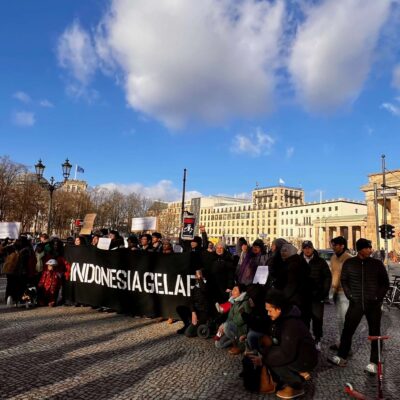
The term civil society, deeply rooted in Western thought, is largely associated with liberal democratic individualism and subjectivity. By this standard, the concept of civil society in Asia may not align with Western definitions. However, civil society also can refer to a public sphere where non-state or non-market associations and individuals voluntarily evolve and take action for a cause. We can observe dynamic activism among associations and individuals in relation to the state in every society around the world, leading to new social practices and possibilities of civil society.
‘Varieties of Civil Society Across Asia’ focuses on civil society within Asian settings and explores the dynamics of Asian civil societies. Following Ogawa’s first edited volume, Routledge Handbook of Civil Society in Asia, this updated version examines civil societies especially in the aftermath of the COVID-19 pandemic, which has significantly affected state-society relations.
This book intriguingly uncovers Asian civil societies that are not well explained by Western frameworks, the emergence of novel civic tactical inventions, and the various activities of civil organizations operating under repressive regimes in contemporary times.
The book is organised into four parts: Challenges, Civic Techniques, Governance, and New Societal Practices and Reflexive Spaces.
’Challenges’ highlights how civil society organisations in Thailand, Sri Lanka, and the Philippines have navigated and responded to various adversities. Chapter 1 explores Thailand’s civic space and emergency powers during the pandemic, which have repressed rights-based civic movements while privileging conservative social forces. Chapter 2 examines Sri Lanka’s economic crisis and mass uprising that forced the president to resign in 2022, with civil society using new forms of action (the aragalaya) and forming coalitions that have rejuvenated the civic space. Chapter 3 looks at the mobilisation for press freedom under the regime of former president Rodrigo Duterte in the Philippines, which showed civil society’s resilience and adaptability, but also fell short of significant impact due to a lack of overarching solidarity and limited politico-economic elite support.
’Civic Techniques’ highlights the innovative strategies and adaptive approaches employed by civil society organisations in Hong Kong, mainland China, Japan, and Taiwan, along with a pan-Asian case (Chapters 4-8). The Hong Kong Chapter looks at civil society’s response to the Chinese government’s imposition of the National Security Law in 2020 which suppresses dissent. The chapter shows that some activists are reorganising themselves in a more moderate manner, while some are continuing to engage from outside Hong Kong. Civil society in mainland China is examined (Chapter 5) in relation to the challenges and adaptions of transnational civil society organisations, which are expected to influence a context where ‘state-led’ civil society predominates. Chapter 7 looks at the role of New Bloom an online magazine on youth culture and politics in Taiwan, which serves as a platform for identity and community building among its members, demonstrating how diaspora groups can influence homeland politics and engage globally. In Japan, non-profit organisations have done pioneering work in relation to domestic violence and sexual abuse (Chapter 6) providing essential services to support victims and advocating for policy reform. Chapter 8 focuses on the role of the United Nations Global Compact on Migration, which provides an innovative dialogue platform among states, the private sector, and civil society, but which can create an illusion of success without substantial policy implementation by member states.
The ‘Governance’ section explores innovative governance frameworks led by civil society in various Asian contexts. Chapter 9 looks at how civil society helps local voices be heard amid top-down development in the Ganges-Brahmaputra basin’s sustainable watershed management across Tibet, Nepal, India and Bangladesh. Chapter 10 discusses the promotion of citizen participation in urban governance in the context of ‘co-city’ initiatives for urban commons management in Asia, comparing them with European counterparts to identify areas for improvement.
Lastly, the ‘New Societal Practices and Reflexive Spaces’ section explores NGOs’ poverty-alleviating endeavors (Chapter 11) in the context of an ineffective Cambodian regime, where microfinance programs have paradoxically increased debt, exacerbated poverty, led to migration to Thailand, and resulted in human trafficking. Chapter 12 focuses on the emergence of new Japanese International non-governmental organisations after the 1990s, which go beyond a simple dynamic of aid providers and passive recipients. Chapter 13 examines the role of civil society in Japanese history, particularly a medical group from Kumamoto Imperial University, who provided essential medical services, including abortions, to women repatriated from former colonies after WWII, arguing for a broader understanding of activism by Japanese citizens.
Throughout the book, interesting case studies in Asian civil society are revealed that are not explained by Western frameworks, such as the failure or countereffect of microfinance in Cambodia; and Chinese transnational NGOs which co-operate with the State instead of pressuring it. This book highlights that, according to Western standards, some citizens’ or organisations’ activities may not be defined as civil society, allowing readers to observe civic spaces that would otherwise be overlooked and opening up new understandings of civil society.
The book also untangles how civil society organisations in Asia have responded to the resurgence of repressive governments in recent years and their novel tactical approaches under restrictive political conditions. This phenomenon aligns with Albert O. Hirschman’s concept of the ‘conservation and mutation of social energy,’ as seen in his examination of Latin American civil societies. The social energy that once fueled societal change in opposition to the State may appear diminished after a regime becomes repressive, but it is transformed within the society, leading to creativity and novel forms of civil society.
This book offers inspiration through the dynamic and varied civil societies examined and is recommended for those who want an update on Asian civil society. Investigating Asian civil society is a remarkable project that offers new possibilities for understanding civil society and I look forward to future updates.
Image: Protestors in rain in Hong Kong, opposing the 2019 Hong Kong National Security Law. Credit: Studio Incendo/WikiCommons.




